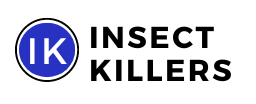Pest control is the effort to minimize the amount of damage done by pests (plant or animal organisms that interfere with human activities). Almost any organism can become a pest when its numbers grow out of control, especially in urban and agricultural environments. Some organisms that are considered pests include rodents, birds, insects and plant diseases. Pests can be harmful or merely annoying. They can cause direct economic losses to farms and gardens, or they may present a health risk to people, pets, livestock or crops.
There are many ways to control pests, and the approach depends on the situation and the desired outcome. Eradication is rarely the goal in outdoor pest situations, except where an exotic pest has been accidentally introduced and is causing serious problems, such as the Mediterranean fruit fly or the gypsy moth. Prevention and suppression are more common goals. Prevention is the key to successful pest control, and there are many preventive nonchemical methods that can be used.
Correctly identifying the pest and learning about its life cycle and biology is important before choosing a management strategy. This information helps to determine whether the pest can be tolerated or should be controlled and what controls are needed.
Natural forces often influence pest populations, such as weather, available food and water, predators, parasites, and competition. Using cultural practices and modifying environmental conditions can help to reduce pest numbers. These can include maintaining proper sanitation, removing infested material, planting resistant varieties, and improving soil quality.
Physical or mechanical control methods are devices or machines that physically trap, kill or disrupt pests or their habitat. These include nets, fences, screens, barriers, traps, spraying, cultivating, soil solarization and heat treatments, and a variety of other techniques. Chemical control includes the use of pesticides to destroy or suppress unwanted organisms. These materials can be organic or synthetic, and must be chosen and applied carefully to minimize risks to humans, beneficial organisms, and the environment.
Integrated pest management (IPM) is an ecosystem-based strategy that uses monitoring, preventive and nonchemical methods, and when necessary, the safe use of pesticides to achieve a desirable balance between organisms and their environment. Before applying any pest control material, check for and remove potential entry points such as ripped window or door screens, stacked firewood, and loose or missing caulking. Store clothing and linens in sealed plastic bags to protect them from moths. Seal cracks and crevices in foundation, floors, and walls with caulk or steel wool to prevent mice from entering.
